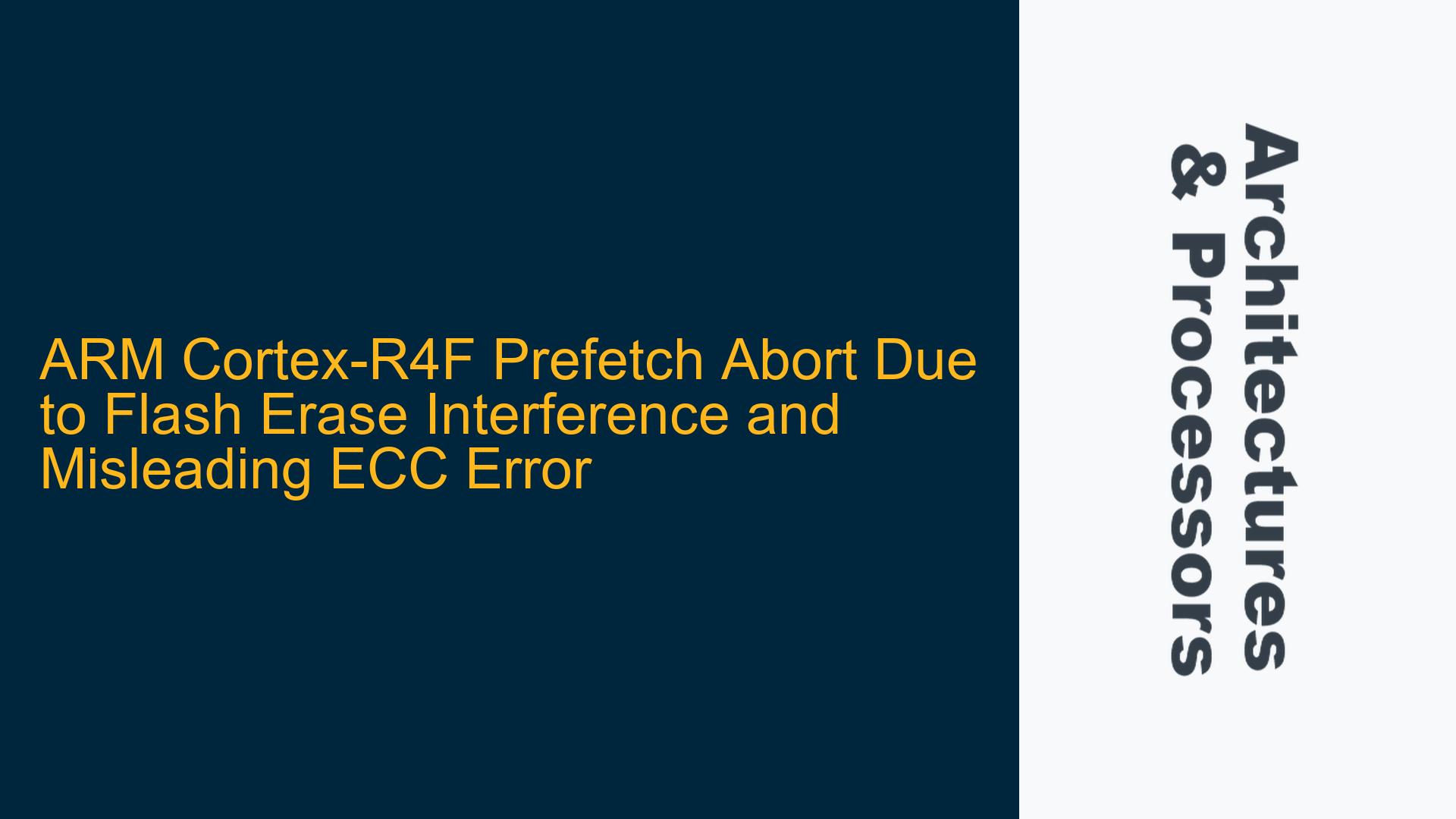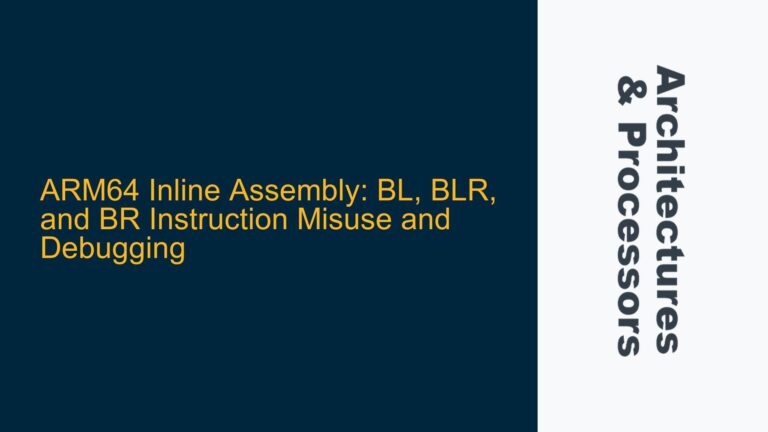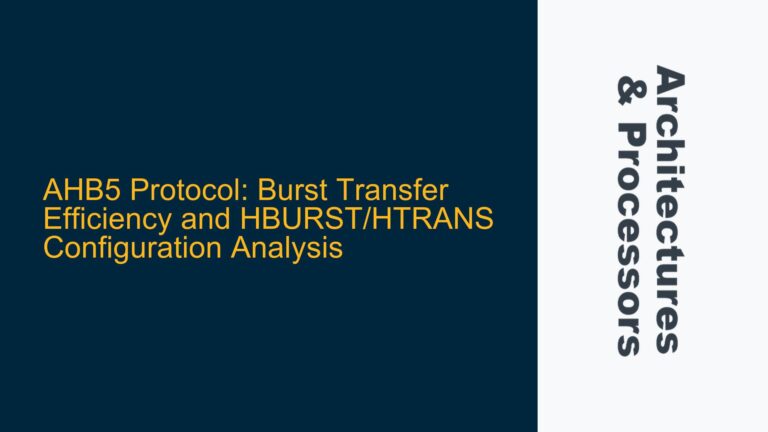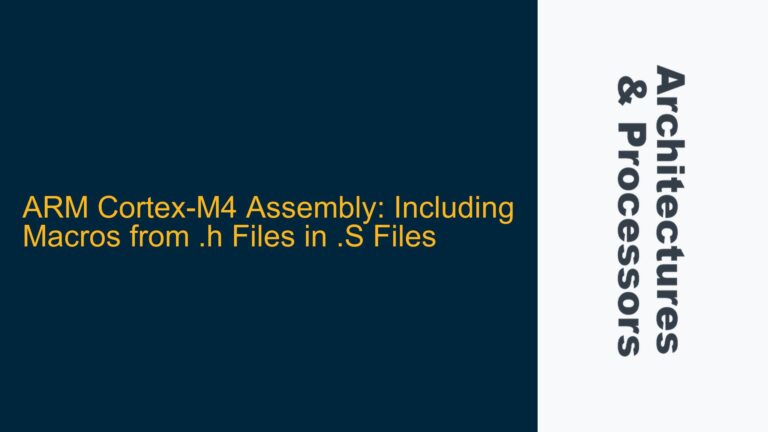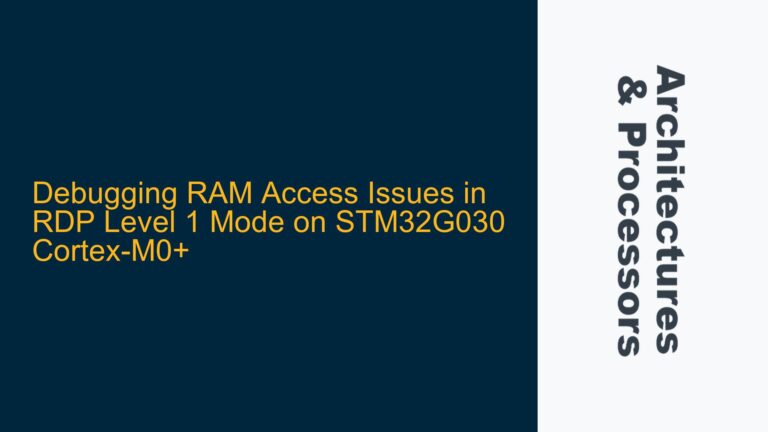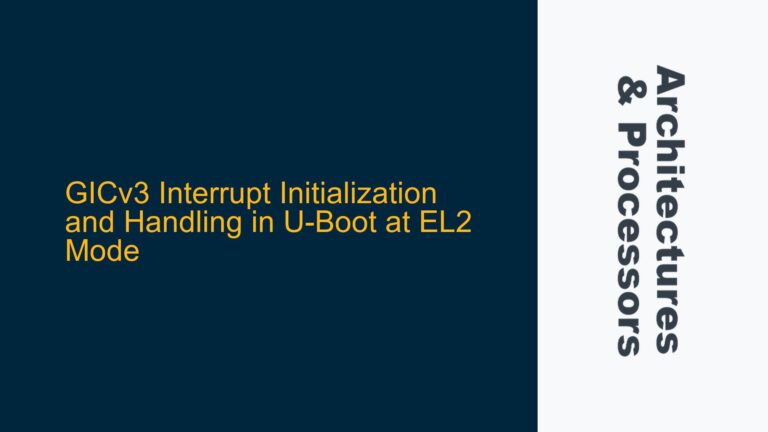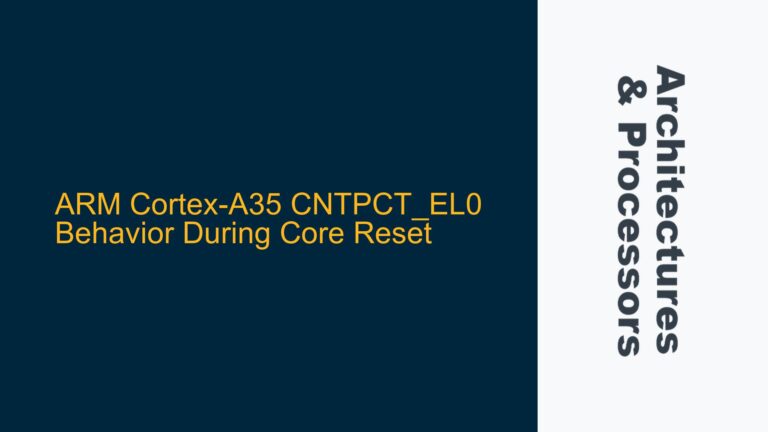Prefetch Abort During Flash Erase with Misleading ECC Error Indication
The issue at hand involves an ARM Cortex-R4F processor (specifically the TI TMS570LS3137) experiencing a prefetch abort during flash erase operations. The prefetch abort is accompanied by misleading indications of a Synchronous Parity/ECC error in the Instruction Fault Status Register (IFSR), despite the fact that ECC checks have been explicitly disabled in the ATCM (Advanced Tightly Coupled Memory). The root cause of the issue is not related to ECC but rather to an interrupt occurring during a flash erase operation, which leads to an attempted instruction fetch from an address within the flash bank being erased. This fetch attempt violates the flash controller’s constraints, resulting in a prefetch abort.
The prefetch abort is characterized by the following register states:
- r14_abt (Abort Mode Link Register): Contains the value
0x10, which corresponds to the address of the data abort vector. This value is unexpected because it does not reflect the actual return address at the time of the abort. - IFAR (Instruction Fault Address Register): Contains the value
0x0000000C, which is the address of the prefetch abort vector. This indicates that the processor attempted to execute an instruction from this address, which is not part of the application code. - IFSR (Instruction Fault Status Register): Contains the value
0x00000409, indicating a Synchronous Parity/ECC error. - AIFSR (Auxiliary Instruction Fault Status Register): Contains the value
0x00400000, indicating that the error occurred in the ATCM.
The user initially suspected that the issue was related to ECC, as the IFSR indicated a Synchronous Parity/ECC error. However, the ECC checks had been disabled by clearing the ATCMPCEN, B0TCMPCEN, and B1TCMPCEN bits in the Auxiliary Control Register (ACTLR). The following assembly code was used to disable ECC checks:
asm(" PUSH {r1}");
asm(" MRC p15, #0, r1, c1, c0, #1"); // Read ACTLR
asm(" BIC r1, r1, #0x0E000000"); // Clear ATCMPCEN, B0TCMPCEN, B1TCMPCEN
asm(" MCR p15, #0, r1, c1, c0, #1"); // Write ACTLR
asm(" POP {r1}");
Despite this, the prefetch abort persisted, leading to further investigation.
Interrupts During Flash Erase and Instruction Fetch Constraints
The root cause of the issue lies in the interaction between flash erase operations and interrupt handling. The flash controller on the TMS570LS3137 does not allow instruction fetches from a flash bank that is being erased. When an interrupt occurs during a flash erase operation, the processor attempts to fetch the interrupt vector from the flash bank being erased. This fetch attempt violates the flash controller’s constraints, resulting in a prefetch abort.
The following sequence of events leads to the prefetch abort:
- The flash erase operation begins.
- An interrupt occurs, causing the processor to attempt to fetch the interrupt vector from the flash bank being erased.
- The flash controller prevents the instruction fetch, resulting in a prefetch abort.
- The IFSR incorrectly reports a Synchronous Parity/ECC error, even though ECC checks have been disabled.
The misleading ECC error indication in the IFSR is likely due to the flash controller’s internal error reporting mechanism, which may not distinguish between different types of fetch errors. This can lead to confusion during debugging, as the error indication does not accurately reflect the root cause of the issue.
Disabling Interrupts During Flash Erase and Ensuring Proper Flash Controller Operation
To resolve the issue, interrupts must be disabled during flash erase operations to prevent the processor from attempting to fetch instructions from the flash bank being erased. This ensures that the flash controller’s constraints are not violated, preventing the prefetch abort.
The following steps outline the solution:
-
Disable Interrupts Before Flash Erase: Before initiating a flash erase operation, disable all interrupts to prevent the processor from attempting to fetch instructions from the flash bank being erased. This can be done using the following code:
__disable_irq(); // Disable interrupts // Perform flash erase operation __enable_irq(); // Re-enable interrupts -
Verify Flash Controller Constraints: Ensure that the flash controller’s constraints are respected during all flash operations. This includes avoiding instruction fetches from a flash bank that is being erased or programmed. Refer to the flash controller’s documentation for specific constraints and requirements.
-
Check for Other Potential Issues: Although the root cause of the issue has been identified as interrupt interference during flash erase, it is important to verify that there are no other underlying issues that could contribute to the problem. This includes checking for:
- Incorrect flash controller configuration.
- Improper handling of flash operations in the application code.
- Potential hardware issues with the flash memory.
-
Update Debugging Practices: When debugging similar issues, consider the possibility of misleading error indications in the fault status registers. Always cross-check the fault status registers with the actual root cause of the issue, and do not rely solely on the error indications provided by the registers.
-
Implement Robust Error Handling: Implement robust error handling mechanisms to detect and recover from potential issues during flash operations. This includes:
- Monitoring the flash controller’s status registers for errors.
- Implementing retry mechanisms for failed flash operations.
- Logging error information for post-mortem analysis.
By following these steps, the issue of prefetch abort during flash erase operations can be effectively resolved, ensuring reliable operation of the ARM Cortex-R4F processor in the TMS570LS3137 microcontroller.
Additional Considerations
While the primary issue has been addressed, there are additional considerations that can further enhance the robustness of the system:
-
Flash Controller Configuration: Ensure that the flash controller is properly configured for the specific requirements of the application. This includes setting the correct erase and programming parameters, as well as enabling any necessary error detection and correction mechanisms.
-
Interrupt Latency: Consider the impact of interrupt latency on the system’s real-time performance. Disabling interrupts during flash erase operations can increase interrupt latency, which may affect the system’s ability to respond to time-critical events. Evaluate the trade-offs between flash operation reliability and interrupt latency, and adjust the system design as necessary.
-
Power Management: Ensure that the system’s power management settings do not interfere with flash operations. For example, low-power modes that reduce the clock frequency or disable certain peripherals may affect the flash controller’s operation. Verify that the flash controller is properly supported in all power modes used by the application.
-
Firmware Updates: Regularly update the firmware to incorporate any fixes or improvements related to flash operations and interrupt handling. This includes updates from the microcontroller manufacturer, as well as any custom modifications made to the application code.
-
Testing and Validation: Thoroughly test and validate the system under all expected operating conditions to ensure that the issue has been fully resolved. This includes stress testing the flash operations, as well as verifying the system’s behavior under various interrupt scenarios.
By addressing these additional considerations, the system’s overall reliability and performance can be further improved, reducing the likelihood of similar issues occurring in the future.
Conclusion
The prefetch abort issue observed in the ARM Cortex-R4F processor during flash erase operations is a complex problem that involves interactions between the flash controller, interrupt handling, and the processor’s fault detection mechanisms. By understanding the root cause of the issue and implementing the appropriate solutions, the problem can be effectively resolved, ensuring reliable operation of the microcontroller. Additionally, by considering the broader system design and implementing robust error handling and testing practices, the overall reliability and performance of the system can be further enhanced.
